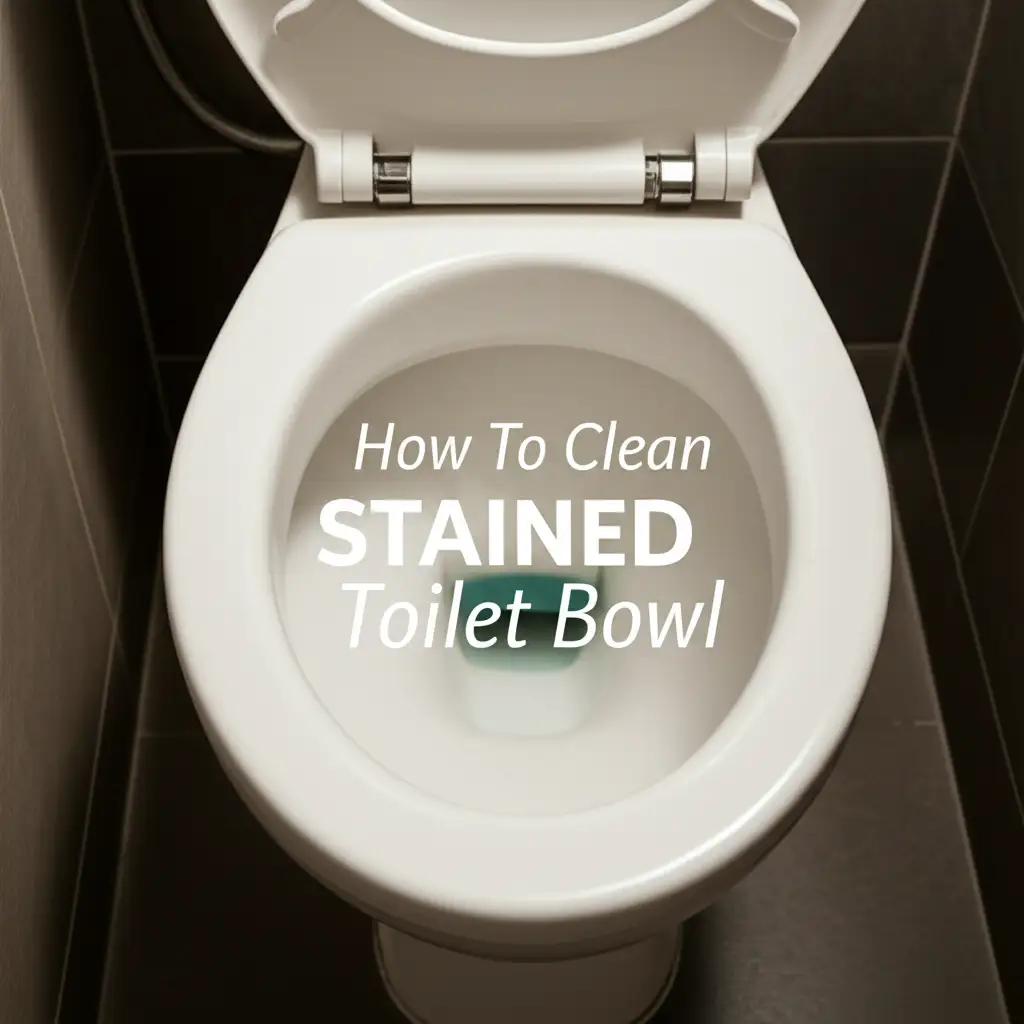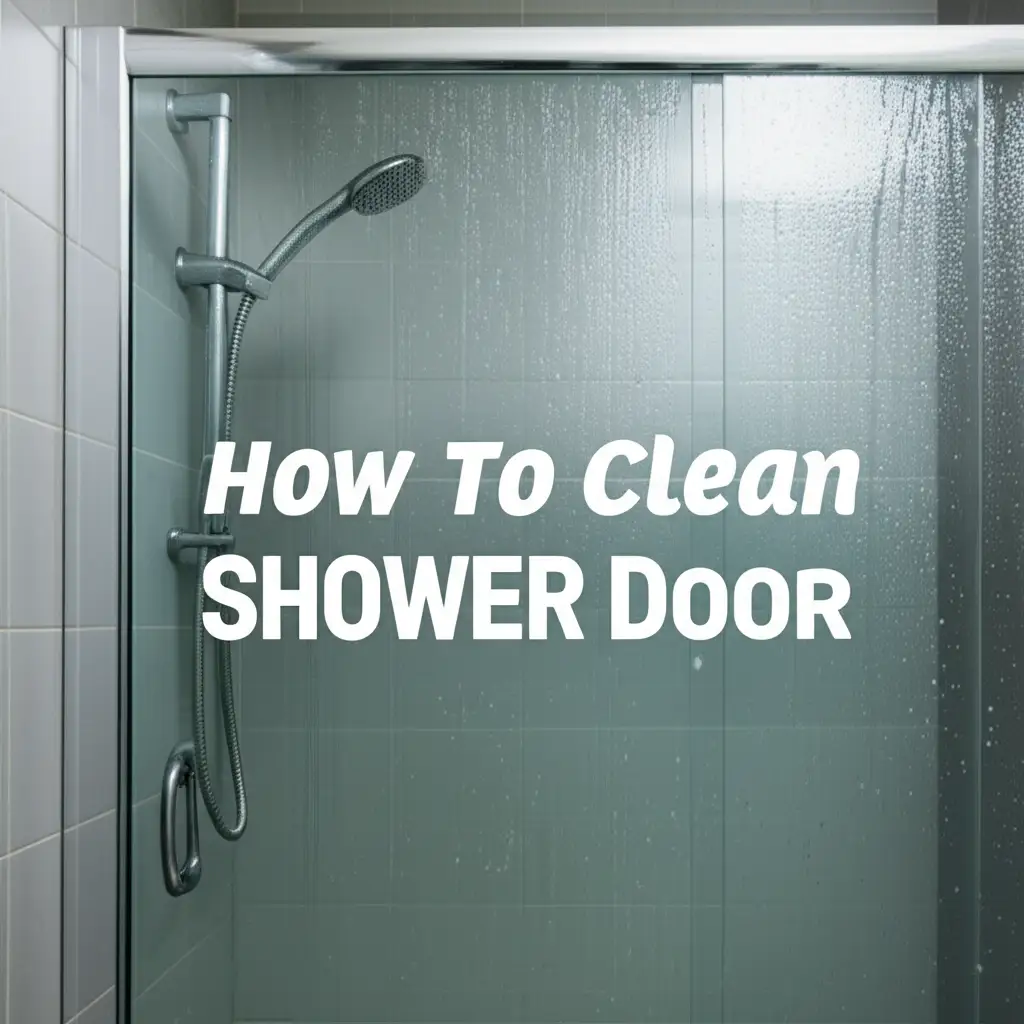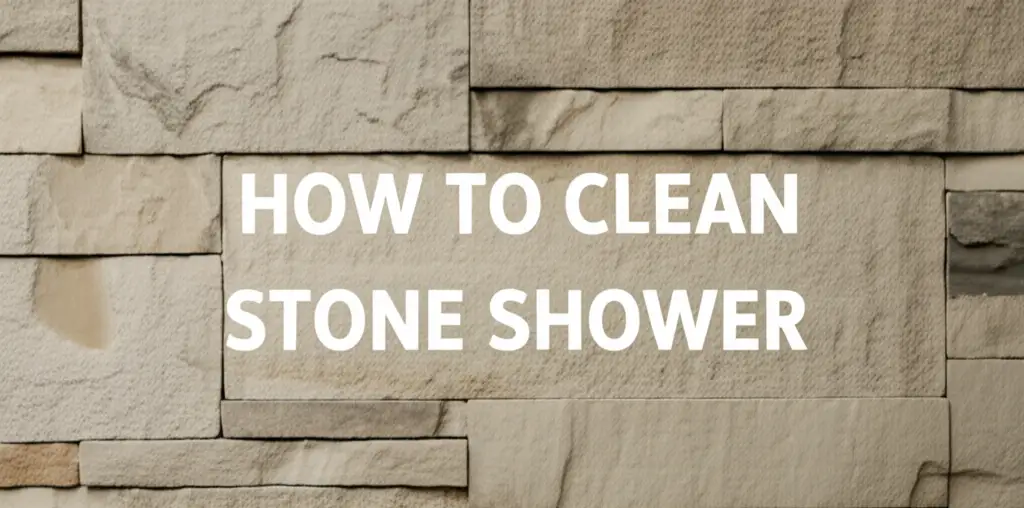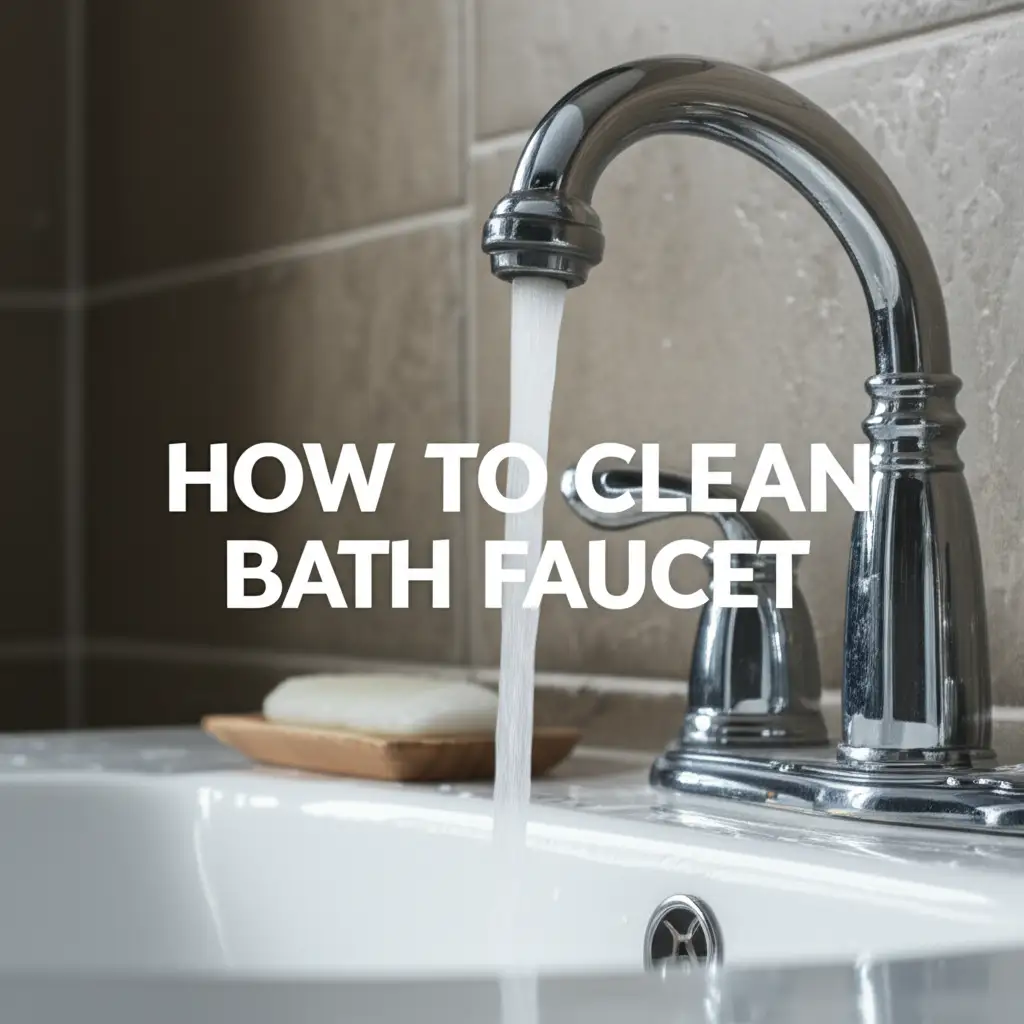· Bathroom Cleaning · 16 min read
How To Clean Stained Toilet Bowl

Discover How to Clean Your Stained Toilet Bowl
A stained toilet bowl can feel like a losing battle. Those stubborn rings and discoloration ruin the look of your bathroom. You want a sparkling clean toilet, but the stains just will not go away. I know this feeling well from my own experiences.
This guide helps you understand why toilet bowls stain and how to clean them. We will explore different stain types and the best ways to tackle each one. You will learn about essential tools, natural solutions, and stronger cleaners. Get ready to transform your toilet bowl from dull to dazzling.
Takeaway
- Identify the type of stain (hard water, rust, mold).
- Choose the right cleaning product for the specific stain.
- Apply cleaners correctly and allow sufficient dwell time.
- Use appropriate tools like brushes, pumice stones, or sponges.
- Implement regular cleaning habits to prevent future stains.
Cleaning a stained toilet bowl requires identifying the stain type, such as hard water, rust, or mold. Use an acid-based cleaner for mineral stains, an iron-specific remover for rust, or a bleach-based cleaner for mold. Apply the product, allow it to sit, then scrub and flush.
Understanding Common Toilet Bowl Stains and Their Causes
Stains in your toilet bowl are common. They usually come from minerals in water, mold, or bacteria. Understanding the cause helps you pick the right cleaning solution. Knowing your enemy makes cleaning easier.
Hard water causes many toilet stains. Water contains minerals like calcium, magnesium, and iron. These minerals build up on surfaces when water evaporates. This creates a hard, chalky residue. This residue often appears as brown, yellow, or off-white rings. Over time, these mineral deposits become very difficult to remove.
Rust stains are another frequent problem. Iron particles in your water supply cause these. They also come from old pipes or parts inside your toilet tank. Rust appears as reddish-brown streaks or spots. These stains can make your toilet look old and dirty. They cling to the porcelain tightly.
Mold and mildew can also stain your toilet bowl. These grow in damp, dark environments. They appear as black, pink, or even green spots. Mold and mildew thrive under the rim or in standing water. Regular cleaning helps prevent their growth.
Sometimes, blue or green stains appear. These usually come from copper pipes. The copper corrodes and leaves a colored residue. This is less common but can happen in older homes. Identifying the stain type is the first step in effective cleaning.
Each stain type requires a specific approach. Using the wrong cleaner can be ineffective or even damage your toilet. For instance, bleach does not remove mineral stains. Acids remove mineral stains, but they can harm some toilet parts. Knowing the stain saves you time and effort. You get a cleaner toilet faster.
Essential Tools and Supplies for Effective Toilet Cleaning
Having the right tools and supplies makes cleaning your toilet bowl easier. You do not need many items, but the right ones are important. Preparing your cleaning arsenal before you start saves time. This ensures you can tackle any stain type.
A good toilet brush is your primary tool. Look for one with strong bristles that reach under the rim. A sturdy handle helps you apply enough pressure. A silicone brush may be gentler but less effective on tough stains. I prefer a traditional bristle brush for stubborn marks.
Rubber gloves protect your hands from harsh chemicals and germs. Always wear them when cleaning your toilet. Safety glasses are also wise if you use strong acidic or bleach-based cleaners. These protect your eyes from splashes. Your safety matters when cleaning.
You need a variety of cleaning agents. For hard water and limescale, an acid-based cleaner works best. Vinegar or lemon juice are natural options. Commercial cleaners like CLR or specific toilet bowl cleaners are also effective. These break down mineral deposits efficiently. If you need help with this, consider learning how to clean limescale from toilet bowl.
For rust stains, you need a product specifically designed for iron removal. Rust removers contain oxalic acid or similar ingredients. Bleach will not remove rust; it can actually set it. Choosing the right rust remover is crucial for success. Learn more about how to clean rust from toilet bowl to properly handle it.
For mold and general disinfection, bleach or a bleach-based cleaner is effective. These kill germs and remove mildew stains. Be careful never to mix bleach with acid cleaners. This creates dangerous fumes. Always ensure good ventilation when using bleach products.
You might also need a pumice stone for very tough stains. These stones are abrasive but safe for porcelain. They gently rub away deposits without scratching. A non-scratch scrubbing pad can also help for light stains or applying cleaners. These tools help you achieve a truly clean finish.
Step-by-Step Guide to Cleaning Common Toilet Stains
Cleaning common toilet stains requires a systematic approach. Follow these steps for the best results. This method targets typical grime and light discoloration. It forms the base for tackling tougher problems later.
First, prepare the toilet. Flush the toilet to wet the bowl surface. You can also turn off the water supply and flush to empty the bowl. This exposes the stains to the cleaner directly. Draining the water allows concentrated action on stains.
Next, apply your chosen cleaner. For general dirt and light stains, a good all-purpose toilet bowl cleaner works well. Squeeze the cleaner under the rim and let it run down. Ensure the cleaner covers all stained areas. Allow the cleaner to sit for at least 5-10 minutes. This dwell time lets the chemicals work.
After the cleaner sits, scrub the bowl. Use your toilet brush to scrub vigorously. Pay special attention to the water line and any visible stains. Scrub under the rim as well. The bristles work the cleaner into the stains, loosening them. For persistent rings, you might want to learn how to clean toilet ring stain.
Once you finish scrubbing, flush the toilet. This rinses away the cleaner and loosened stains. Check the bowl for any remaining marks. If stains persist, reapply the cleaner and repeat the scrubbing process. Sometimes, a second application is necessary.
For black or dark stains, these often indicate mold or mildew. Use a cleaner with bleach for these. Apply, let sit, then scrub. Ensure good ventilation when using bleach. These stains respond well to oxidizers. Consider learning how to clean black stuff in toilet bowl for a detailed guide.
Finally, clean the outside of the toilet. Wipe down the seat, lid, and exterior with an all-purpose cleaner. This completes the cleaning process. A clean bowl and a clean exterior make your whole bathroom look better.
Tackling Tough Stains: Rust, Limescale, and Mineral Deposits
Some stains are more stubborn than others. Rust, limescale, and general mineral deposits require specific, stronger methods. These stains bond tightly to the porcelain. You need the right product and patience to remove them.
For limescale and hard water stains, an acid-based cleaner is essential. Products containing hydrochloric acid, phosphoric acid, or oxalic acid are very effective. You can also use natural acids like white vinegar or lemon juice for milder stains. Drain the toilet bowl first to expose the stains fully. Pour a cup or more of white vinegar into the bowl. Let it sit for several hours, or even overnight. The acid breaks down the mineral bonds. For serious buildup, commercial calcium buildup in toilet removers work faster. They penetrate deep into the deposits.
After the acid has soaked, scrub vigorously with a stiff toilet brush. For very thick deposits, a pumice stone can be a lifesaver. Gently rub the pumice stone over the stained areas. It grinds away the hard deposits without scratching the porcelain. Always wet both the stone and the bowl before using. This ensures smooth movement and prevents damage. You can find more detail on how to clean toilet with pumice stone.
Rust stains need a specialized rust remover. These products contain chelating agents that bind to iron particles. Do not use bleach on rust stains; it can make them permanent. Apply the rust remover directly to the stains. Let it sit for the recommended time, usually 15-30 minutes. The product will dissolve the rust. Then, scrub and flush. Multiple applications might be necessary for old, deep rust stains.
For general mineral deposits, often seen as yellow or brown discoloration, a strong acidic cleaner is usually the best bet. These deposits are a mix of calcium, magnesium, and other minerals. Follow the same steps as for limescale removal. Sometimes, you can even remove mineral deposits from toilet without scrubbing, depending on their severity and the cleaner used.
Always read product labels carefully. Follow the safety instructions. Wear gloves and ensure good ventilation. Combining different cleaning chemicals can be dangerous. Never mix acid-based cleaners with bleach. Tackle these tough stains systematically. Your effort will result in a remarkably clean toilet bowl.
Natural Cleaning Solutions for Your Toilet Bowl
You can clean your toilet bowl effectively using natural ingredients. These options are safer for the environment and your family. They also avoid harsh chemical fumes. Many common household items are powerful cleaners.
White vinegar is a cleaning powerhouse. Its acetic acid dissolves hard water stains, limescale, and mild rust. Pour two cups of white vinegar into the toilet bowl. For best results, let it sit overnight. The longer it sits, the more effective it becomes. In the morning, scrub with your toilet brush and flush. Vinegar also helps disinfect and deodorize.
Baking soda works wonders as a gentle abrasive and deodorizer. Combine a quarter cup of baking soda with a cup of white vinegar. Pour the mixture into the toilet bowl. It will fizz, which helps loosen grime. Let it sit for 30 minutes to an hour. Then, scrub vigorously with your toilet brush and flush. This combination is particularly good for general dirt and light rings.
Lemon juice is another acidic option. It contains citric acid, which is good for mineral deposits. Mix equal parts lemon juice and borax to create a paste. Apply this paste directly to the stained areas. Let it sit for a few hours. Then, scrub and rinse. Lemon juice leaves a fresh, clean scent.
Cola drinks can even clean toilet bowl stains. The phosphoric acid in cola helps break down rust and mineral deposits. Pour a can of cola into the toilet bowl, covering the stains. Let it sit for at least an hour, or overnight for tough stains. The acid slowly works to dissolve the grime. Then, scrub and flush as usual. This is a surprisingly effective method, especially for those who want to clean toilet bowl stains with coke.
Borax is a natural mineral compound. It works as a cleaner, deodorizer, and disinfectant. Sprinkle half a cup of borax into the toilet bowl. Let it sit for at least an hour. Then, scrub with a toilet brush and flush. For tough stains, combine borax with vinegar. This creates a powerful, natural cleaning duo.
These natural methods are great for regular maintenance and mild stains. They reduce your exposure to harsh chemicals. Always test a small area first if you are unsure. Using natural cleaners regularly keeps your toilet bowl sparkling.
Advanced Cleaning Techniques and Tools
Sometimes, standard cleaning methods are not enough. For truly tough stains, you need advanced techniques and specialized tools. These methods tackle deeply set stains that others miss. They ensure a spotless toilet bowl.
A pumice stone is an excellent tool for very stubborn hard water rings and mineral deposits. It is abrasive but softer than porcelain. This means it removes stains without scratching the surface. Always wet both the pumice stone and the toilet bowl before use. Gently rub the stone over the stained areas. The stone will wear down as you use it. It effectively sands away the buildup. This method is incredibly effective for old, set-in stains. For more detailed instructions, refer to how to clean toilet with pumice stone.
Specialized commercial cleaners offer strong solutions. For rust, look for cleaners containing oxalic acid or hydrofluoric acid (use with extreme caution). For limescale, strong hydrochloric acid-based cleaners work fast. Always follow the manufacturer’s instructions exactly. Wear heavy-duty gloves and eye protection. Ensure the bathroom is well-ventilated. These cleaners are powerful and require careful handling. They are often the last resort for stains that natural or milder cleaners cannot remove.
You can also use a wet/dry vacuum for extreme cases. This method allows you to completely remove all water from the bowl. This creates a dry surface. Applying a strong cleaner to a dry surface allows maximum concentration. The cleaner acts directly on the stain without dilution. After applying the cleaner and letting it sit, scrub the dry bowl. Then, flush repeatedly to rinse. This method helps the cleaner work more intensely.
For stains under the toilet rim, a specialized rim brush or an old toothbrush helps. These tools reach hidden areas where grime accumulates. Apply cleaner directly under the rim. Scrub thoroughly to remove hidden mold and mineral deposits. The rim is a common spot for tough stains to form. It is also important to know how to clean under rim of toilet properly. Sometimes, black rings form there, and you will need to learn how to clean black ring under toilet rim for effective removal.
Consider products designed for stain prevention. Some toilet bowl tablets contain enzymes that break down minerals and prevent buildup. These drop into the tank and release cleaning agents with each flush. While not a cleaning method, they reduce the need for aggressive cleaning. This proactive approach saves future effort.
Preventing Future Toilet Bowl Stains
Prevention is key to keeping your toilet bowl clean. Regular maintenance saves you from hard scrubbing later. A few simple habits prevent most common stains from forming. You want your toilet to stay clean, not just get clean.
Regular cleaning is the most important step. Aim to clean your toilet bowl at least once a week. Use a standard toilet bowl cleaner and a brush. A quick scrub around the bowl and under the rim prevents mineral buildup. This routine stops stains before they become set. Consistency makes a big difference.
Consider using toilet bowl tablets or automatic cleaners. These products drop into the toilet tank or attach to the rim. They release cleaning agents with each flush. These agents help prevent hard water stains and mineral deposits. Always ensure they are safe for your toilet’s internal components. Some tablets contain bleach, which might degrade rubber parts over time.
Address water quality if you have hard water. A whole-house water softener can significantly reduce mineral buildup in your toilet and other fixtures. This is a long-term solution. It not only keeps your toilet cleaner but also protects pipes and appliances. Softened water reduces the source of many stubborn stains.
Fix leaks promptly. A constantly dripping fill valve or a slow leak from the tank can create a constant stream of mineral-laden water. This leads to persistent stains, especially in one area. Repairing these leaks stops the source of new stains. A simple repair can save a lot of cleaning effort. You might even want to learn how to clean toilet fill valve to keep it in good condition.
Flush after every use. This simple act washes away potential stain-causing elements. Urine and waste can contribute to discoloration and bacterial growth. Prompt flushing minimizes the contact time between these elements and the porcelain surface. It is a very basic but effective preventative measure.
Finally, keep the toilet bowl dry when not in use, if possible. This is hard for typical toilets. However, if you are going away, draining the bowl can prevent stagnant water stains. For example, if you drain the bowl, mineral deposits cannot form. For most daily use, regular flushing and cleaning are sufficient. These preventative steps keep your toilet sparkling with minimal effort.
Frequently Asked Questions
What causes a brown stain in the toilet bowl?
Brown stains in a toilet bowl usually indicate hard water mineral deposits. These include calcium, magnesium, and iron. Iron oxidizes and turns reddish-brown. The minerals build up over time from evaporating water. This creates stubborn discoloration.
Can I use bleach to clean all toilet stains?
No, bleach is not effective for all toilet stains. It works well for mold, mildew, and general disinfection. However, bleach does not remove hard water stains, limescale, or rust. In fact, bleach can make rust stains worse by setting the iron.
How do I remove black stains from my toilet bowl?
Black stains in a toilet bowl often come from mold or mildew. Use a bleach-based toilet cleaner or straight bleach. Apply the cleaner, let it sit for 10-15 minutes, then scrub vigorously with a toilet brush. Ensure good ventilation when using bleach products.
Is a pumice stone safe for toilet bowls?
Yes, a pumice stone is safe for porcelain toilet bowls. Pumice is a volcanic rock that is softer than porcelain but harder than mineral deposits. Wet both the stone and the bowl thoroughly before scrubbing. It removes tough hard water and rust stains without scratching the surface.
How often should I clean my toilet bowl to prevent stains?
You should clean your toilet bowl at least once a week to prevent stains. This regular cleaning removes developing mineral deposits and inhibits mold growth. If you have hard water, consider cleaning more frequently or using preventative measures like water softeners.
Can vinegar really clean tough toilet stains?
Yes, white vinegar can clean tough toilet stains, especially hard water and limescale. Its acetic acid dissolves mineral buildup. For tough stains, pour 2-3 cups of vinegar into the bowl and let it sit overnight. Then, scrub well and flush.
Conclusion
Cleaning a stained toilet bowl does not need to be a difficult chore. We explored how different stains form and the best ways to tackle each one. You learned that identifying the stain type is the first step. Then, you choose the correct cleaner, whether it is a natural solution like vinegar or a powerful commercial product. Using the right tools and techniques makes all the difference.
You now understand how to effectively clean stained toilet bowls. We covered everything from basic scrubbing to advanced methods for rust and limescale. Remember, regular maintenance is your best defense against future stains. A little effort each week keeps your toilet sparkling clean. Go ahead and apply these steps to achieve a spotless and inviting bathroom. You can maintain a truly clean toilet with confidence and ease.
- toilet bowl cleaning
- hard water stains
- rust removal




